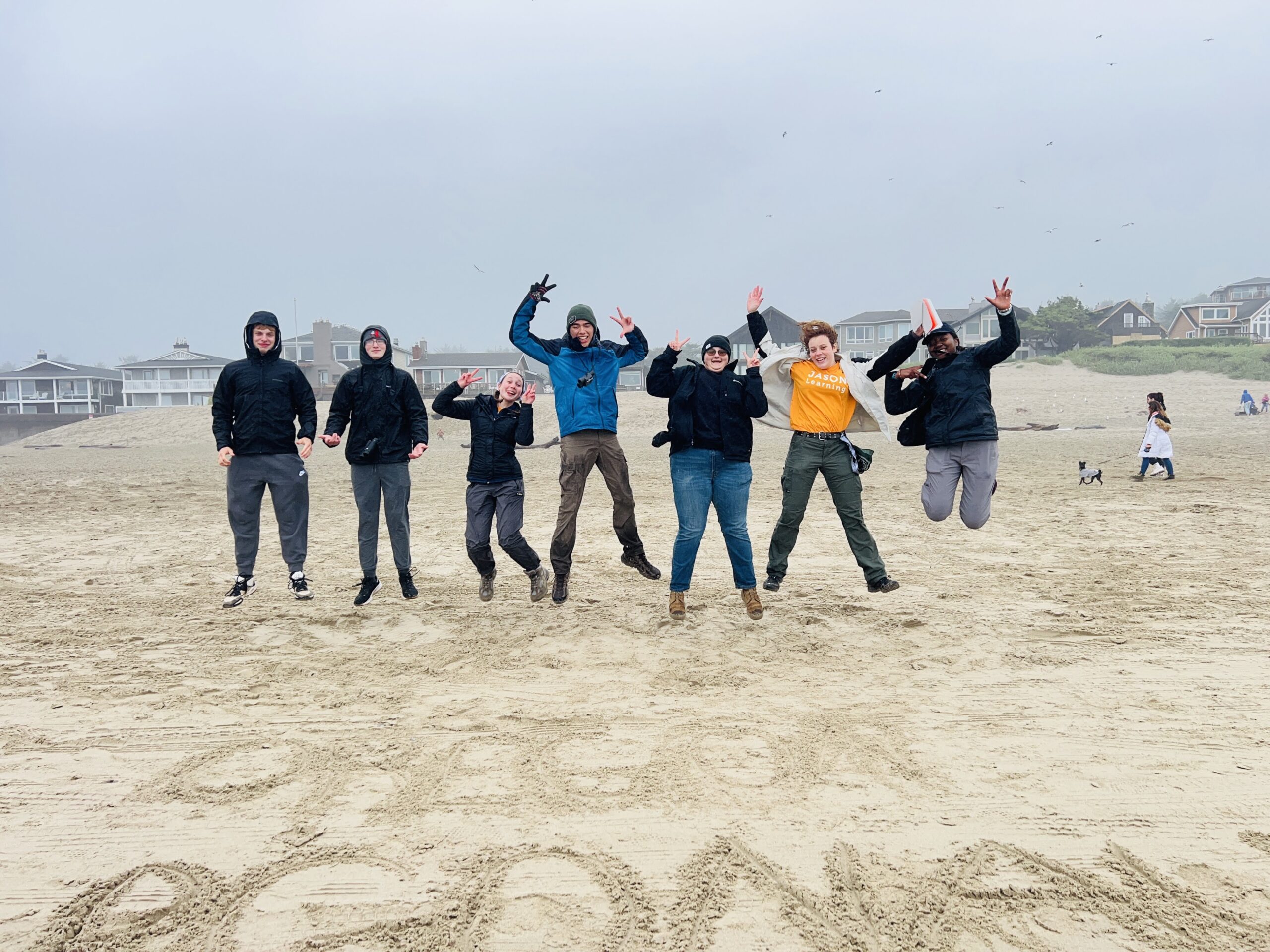2025 Argonaut Expedition Recap
Co-written by Jude Kesl and Jenna Davis
This June, the JASON Argonauts embarked on an unforgettable adventure into the heart of the Pacific Northwest. The 2025 Argonaut Expedition, “Argos for Earth: Designing the Future of Conservation,” took students and educators beyond the classroom and into the field to explore how emerging technologies and fieldwork are shaping the future of conservation science.
From June 20-26, the Argonauts, led by Jude Kesl, Argonaut Expedition Leader, and The Bug Chicks (Kristie and Jessica), immersed themselves in hands-on research, design thinking, and place-based problem-solving in Oregon’s mountains, coasts, and forests.
Here’s a look back at a week packed with science, innovation, and discovery.
Day One: A Change of Course and Ocean Discoveries
The expedition began with smooth travel, and every flight arrived on time! Shortly after the group touched down, a call from the captain of Whale Research EcoExcursions brought some classic field science unpredictability: inclement weather was on the way.
Seizing the moment, the Argonauts hustled down the coast to Depoe Bay, Oregon, and set out on an afternoon whale-watching trip. Though whales remained elusive, the group was treated to sightings of sea lions, otters, and seabirds.
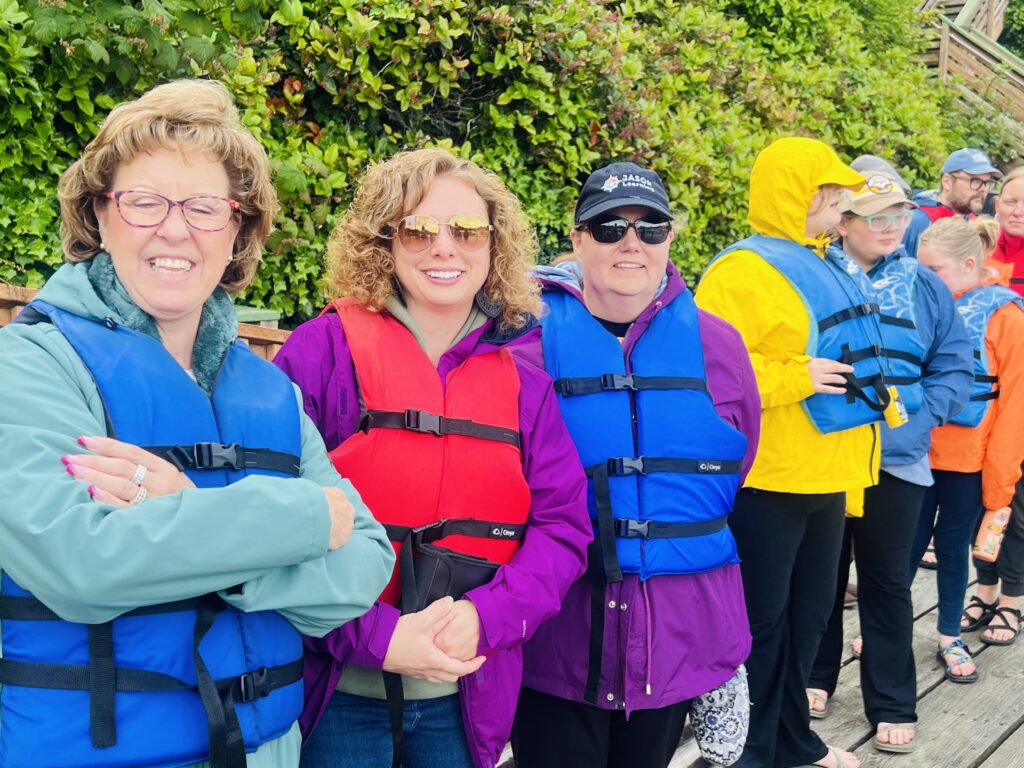
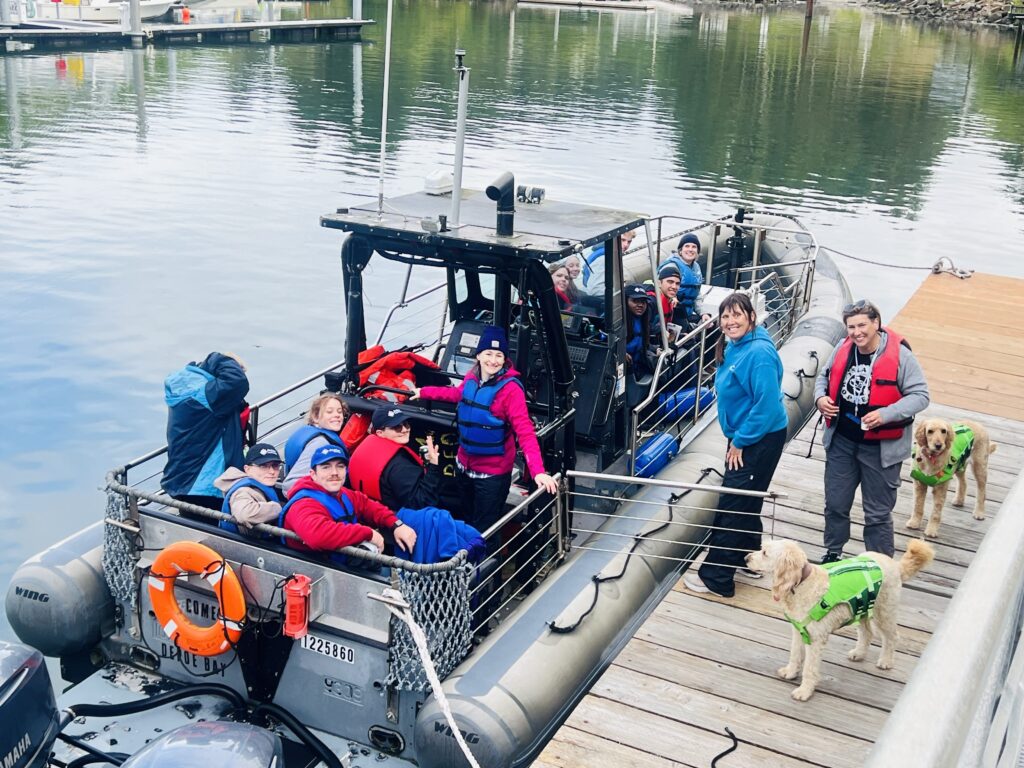
Day Two: Rain, Resilience, and Wildlife
True to the region’s reputation, day two dawned gray, rainy, and windy. Undeterred, the Argonauts braved the elements to go birdwatching. Their efforts were rewarded with sightings of ospreys, a kingfisher, cedar waxwings, a common merganser, and more.
Afterward, the team raced up the coast to Cannon Beach to try tide pooling before the tide returned. Despite the wind pushing waves in faster than expected, they spotted puffins, jellyfish, mussels, sea sacks, California beach fleas, and more before retreating, soaked but smiling.
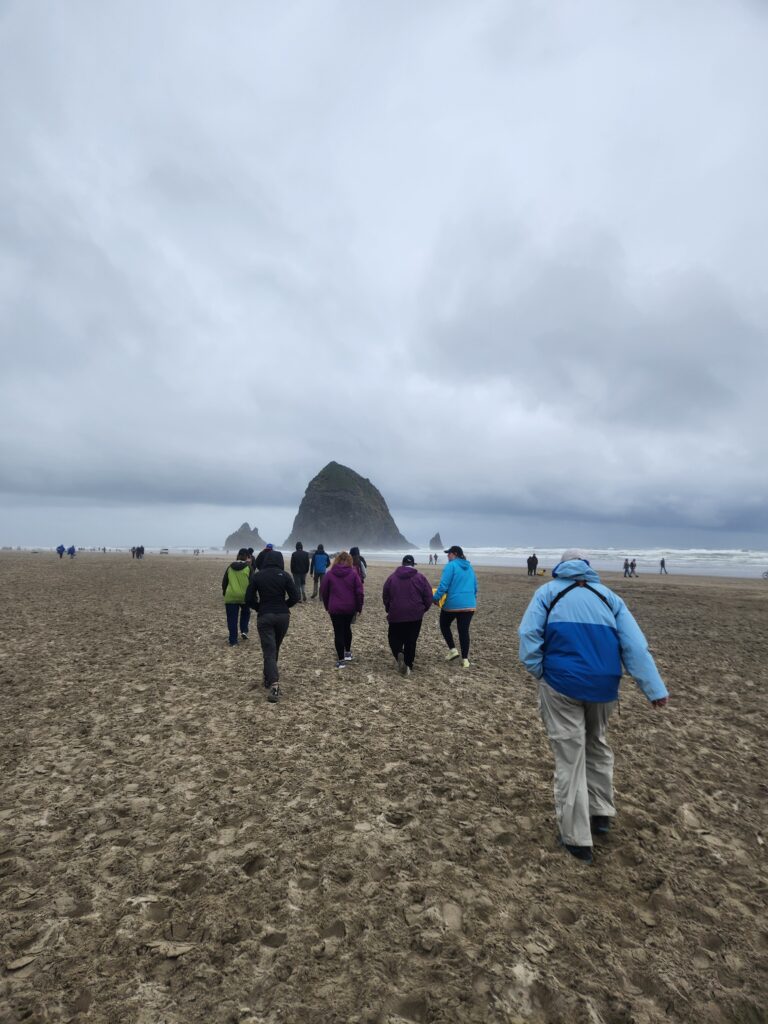
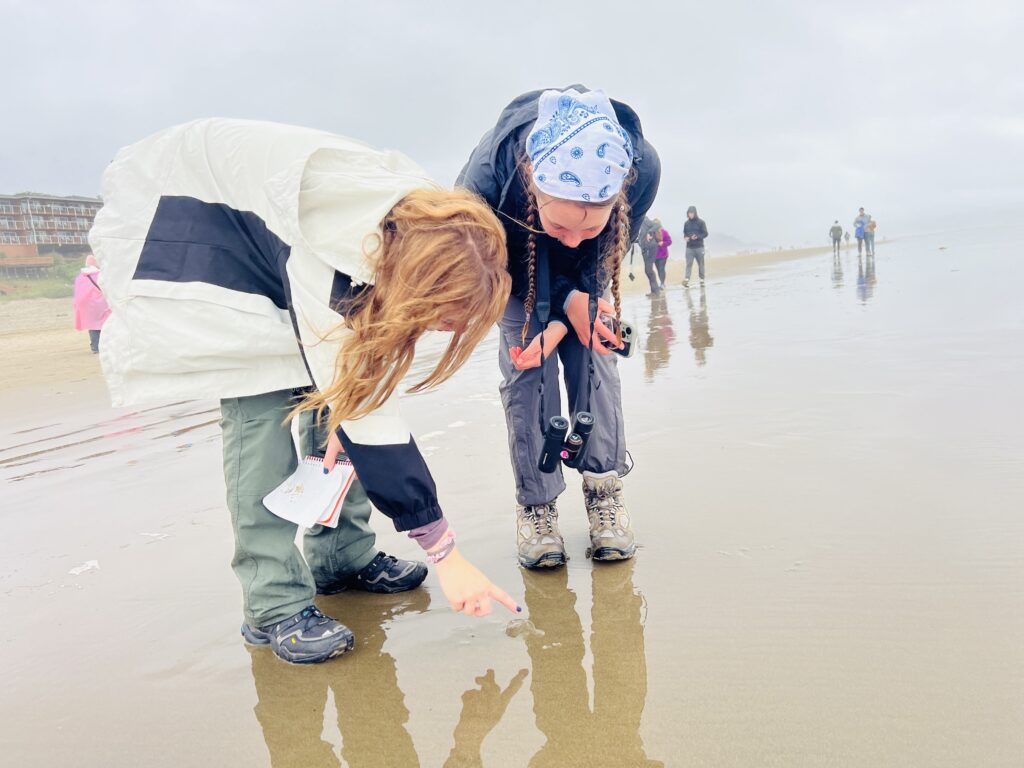
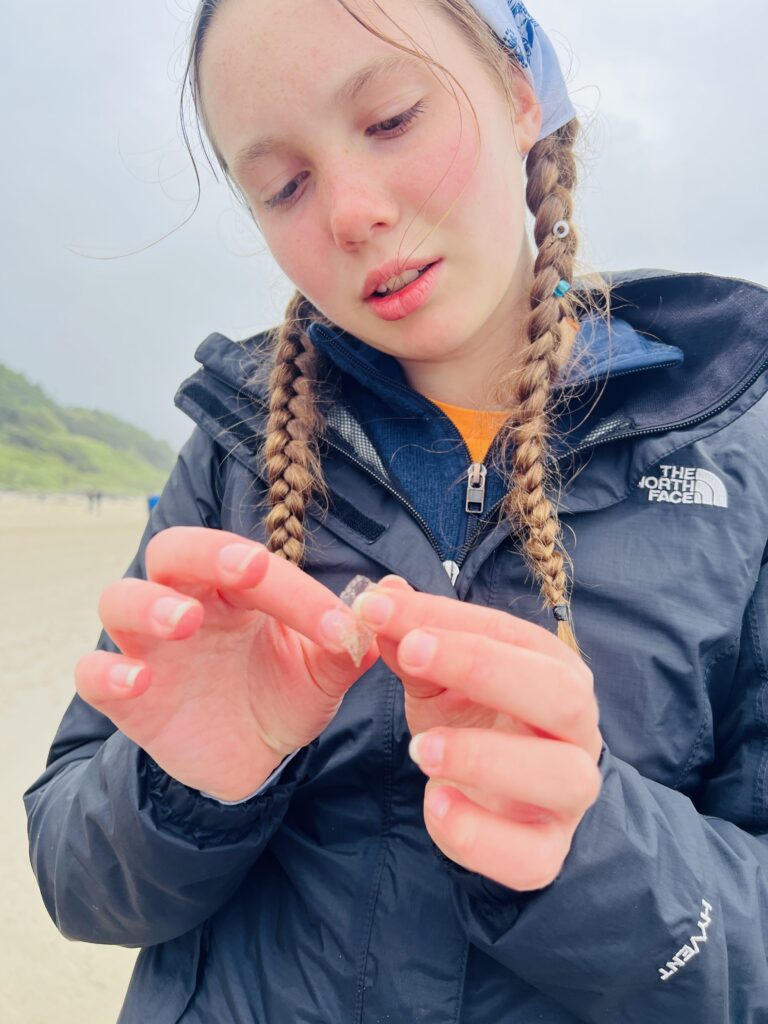
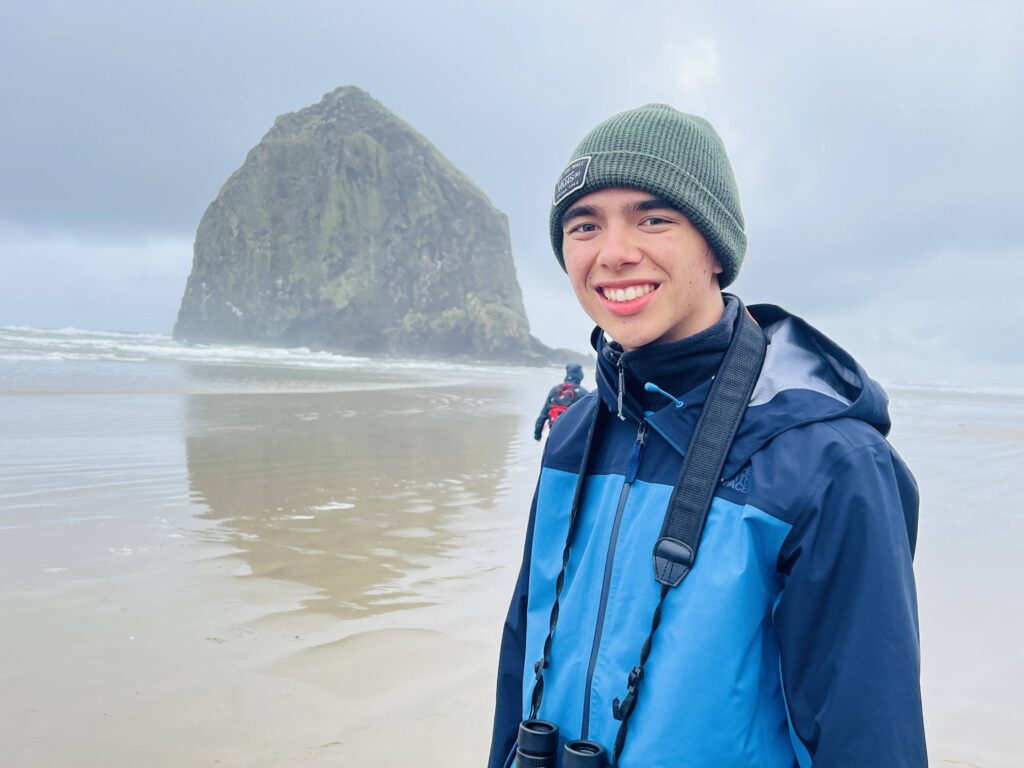
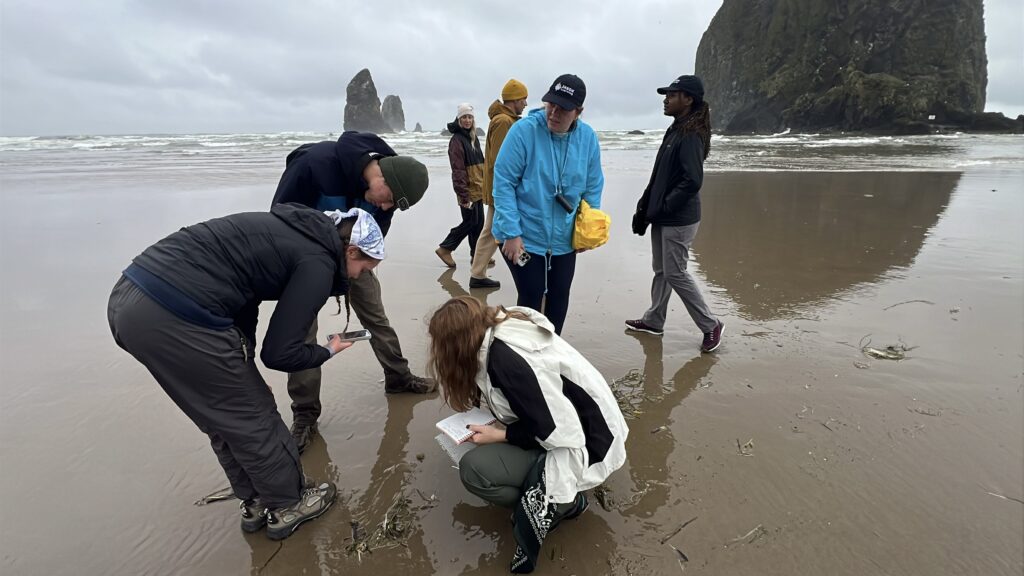
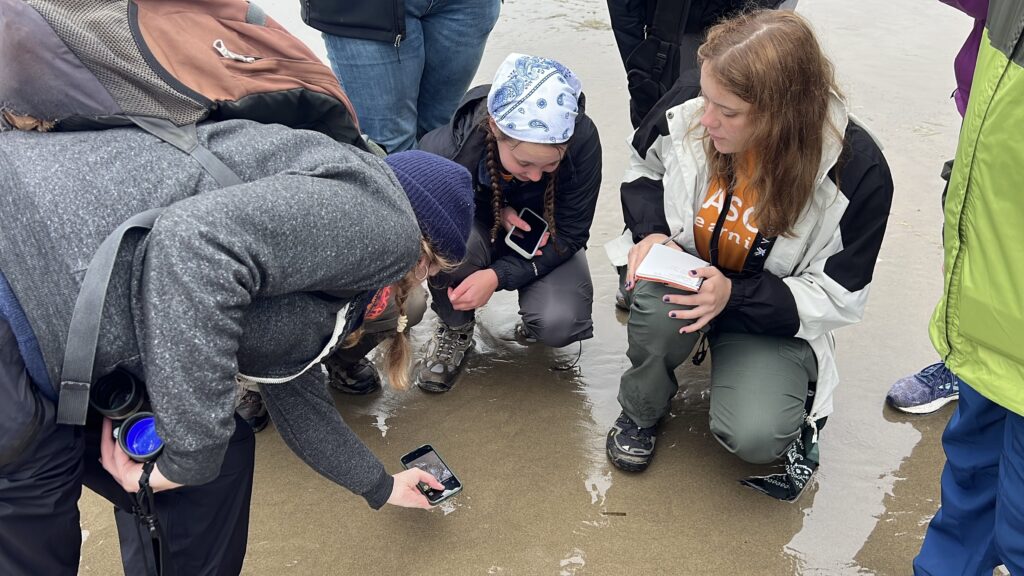
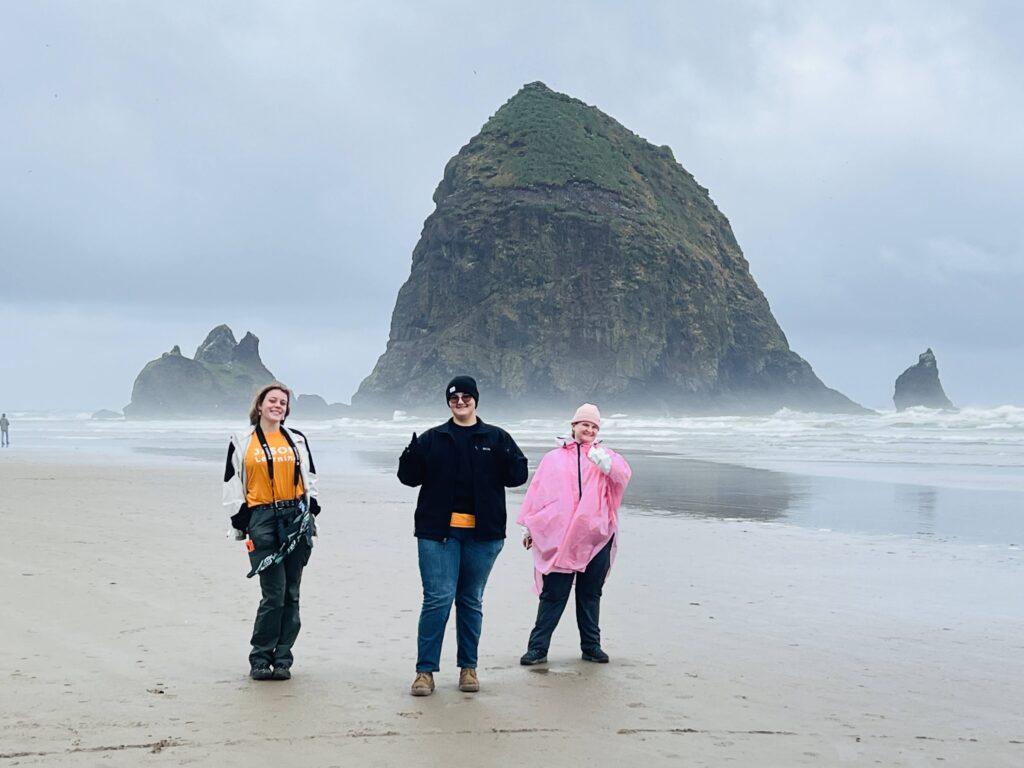
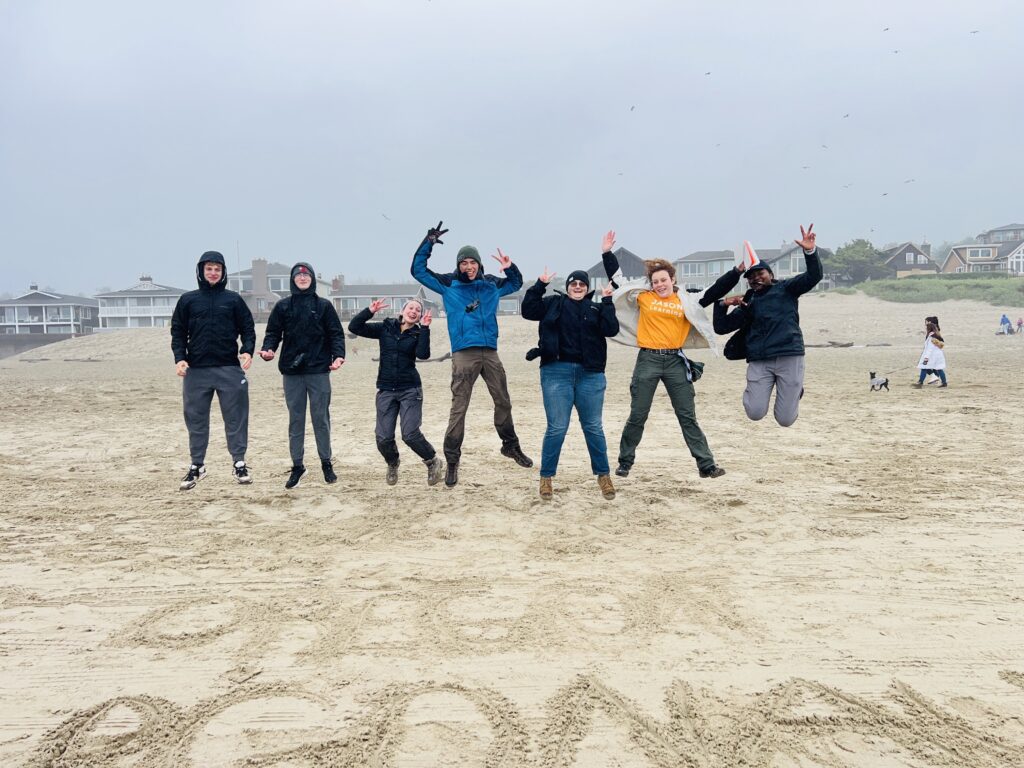
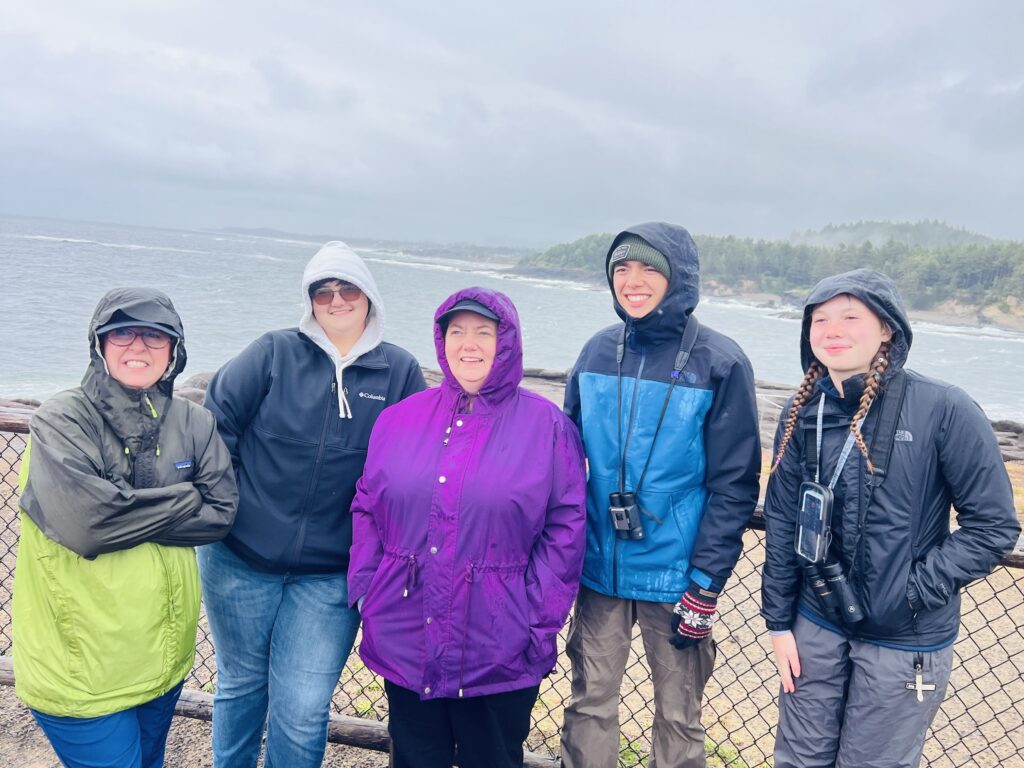
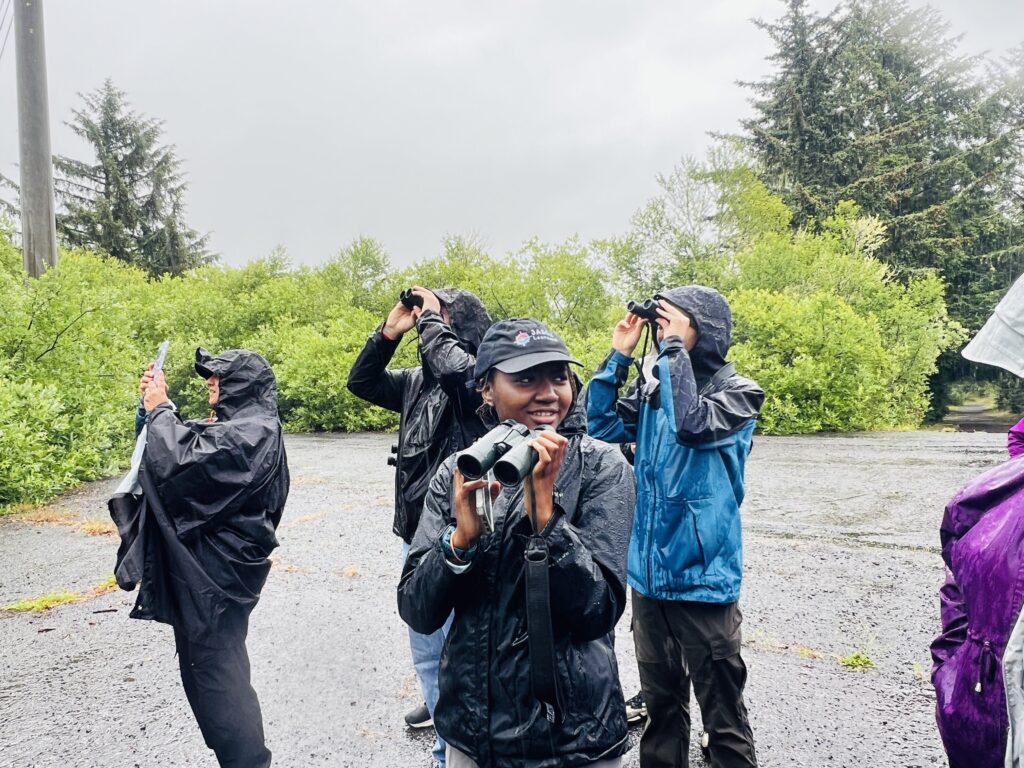
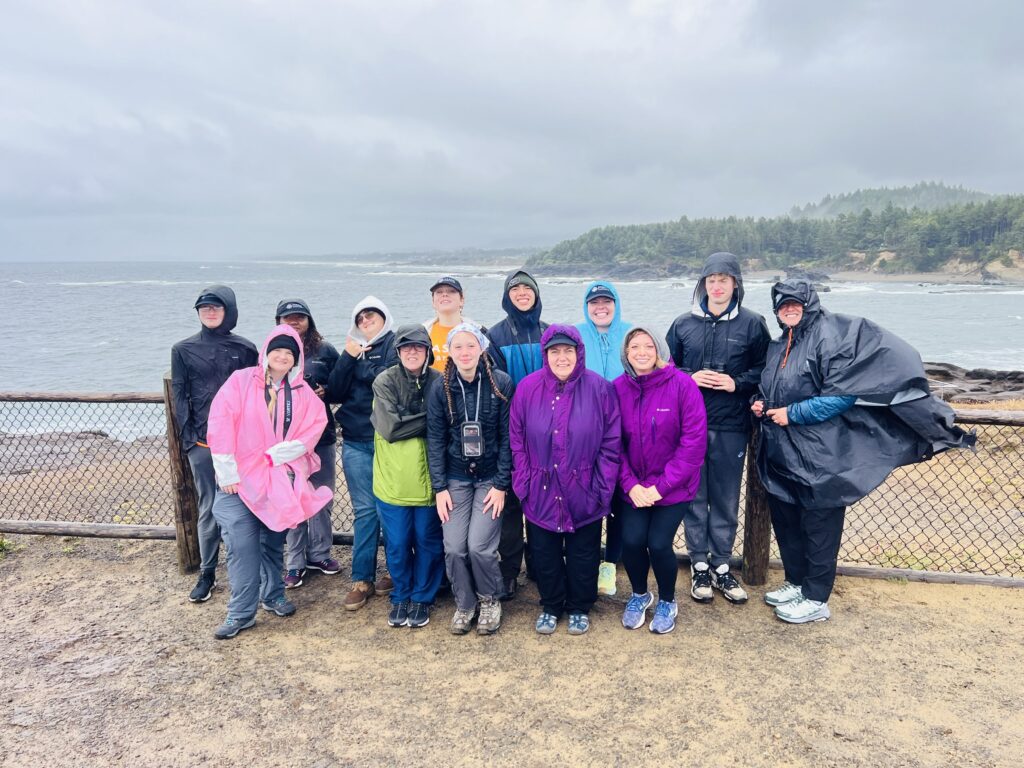
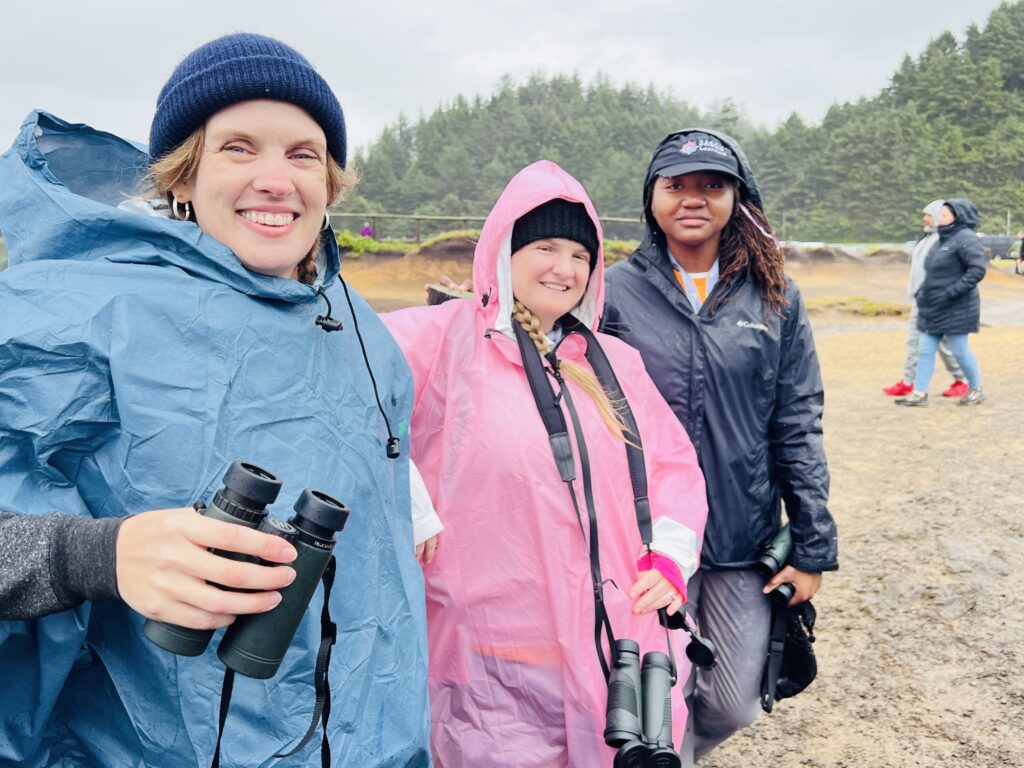
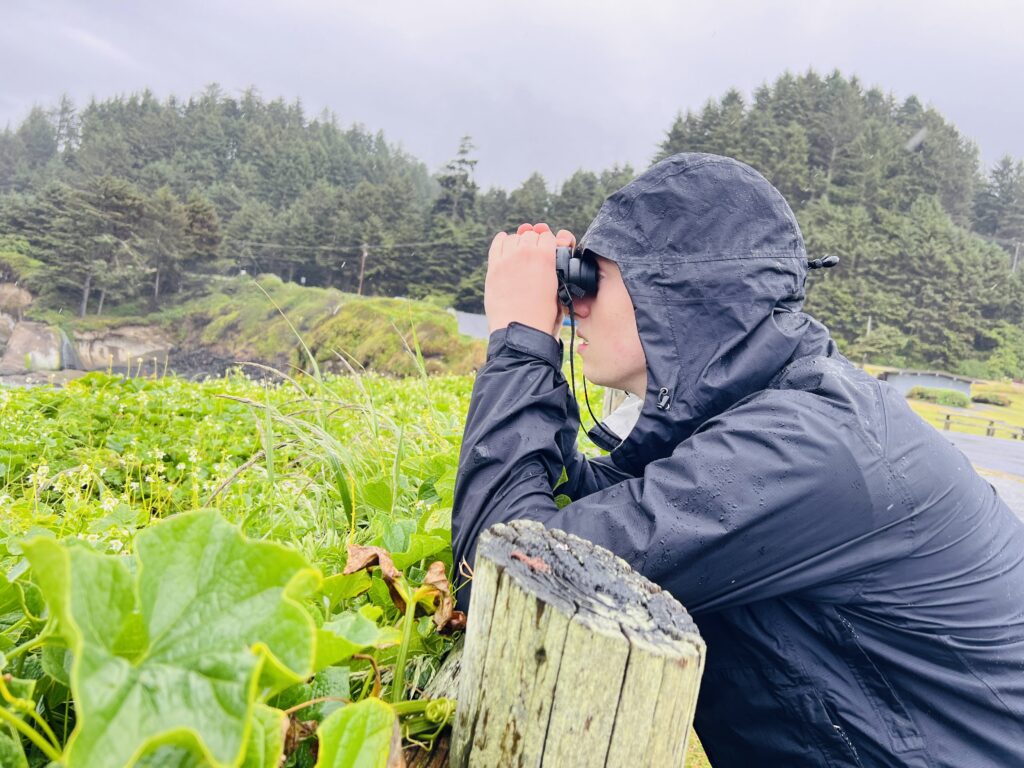
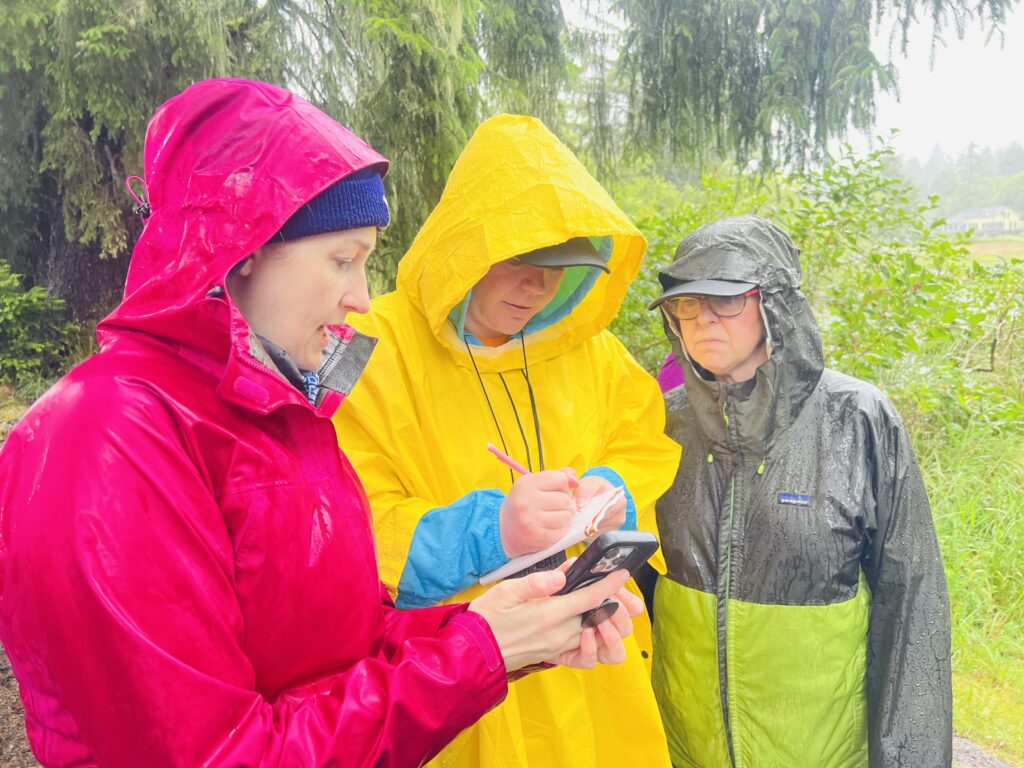
Day Three: Technology Meets Ecology
Sunday brought a full day of exploration and learning. After a morning of team-building and reflection, the Argonauts dove into the transformative power of artificial intelligence (AI) in conservation. They examined how AI and large language models are reshaping the future of science.
The Argonauts then ventured into the field to set up camera traps and acoustic monitors to collect wildlife data, experiencing firsthand how scientists use technology to uncover the hidden lives of creatures we can’t always see with the naked eye.
That evening, they met Jason Holmberg, Director of WildMe at Conservation X Labs, whose journey from chemical engineering to developing AI-powered conservation tools inspired everyone to think big about how AI and technology are resharing scientific research. Jason is also a STEM role model in our “Image Identifier” Design & Pitch Challenge in STEM. He took us through the ups and downs of developing this powerful tool, providing insights into both the exciting possibilities and the challenges that come with blending technology and environmental science.
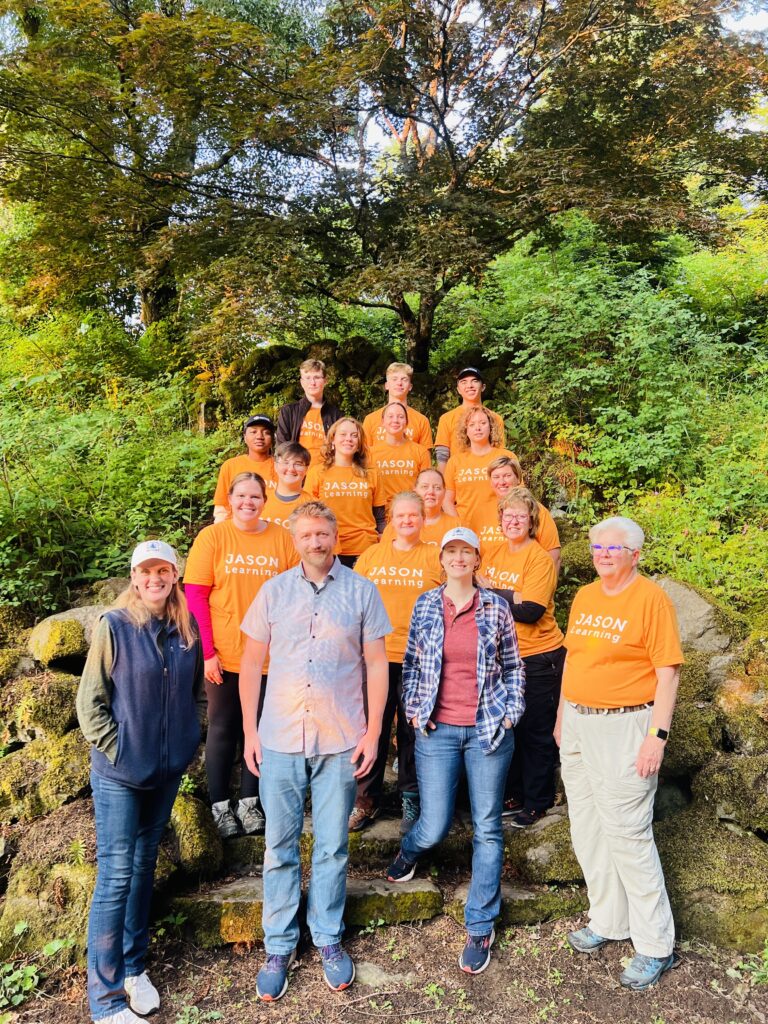
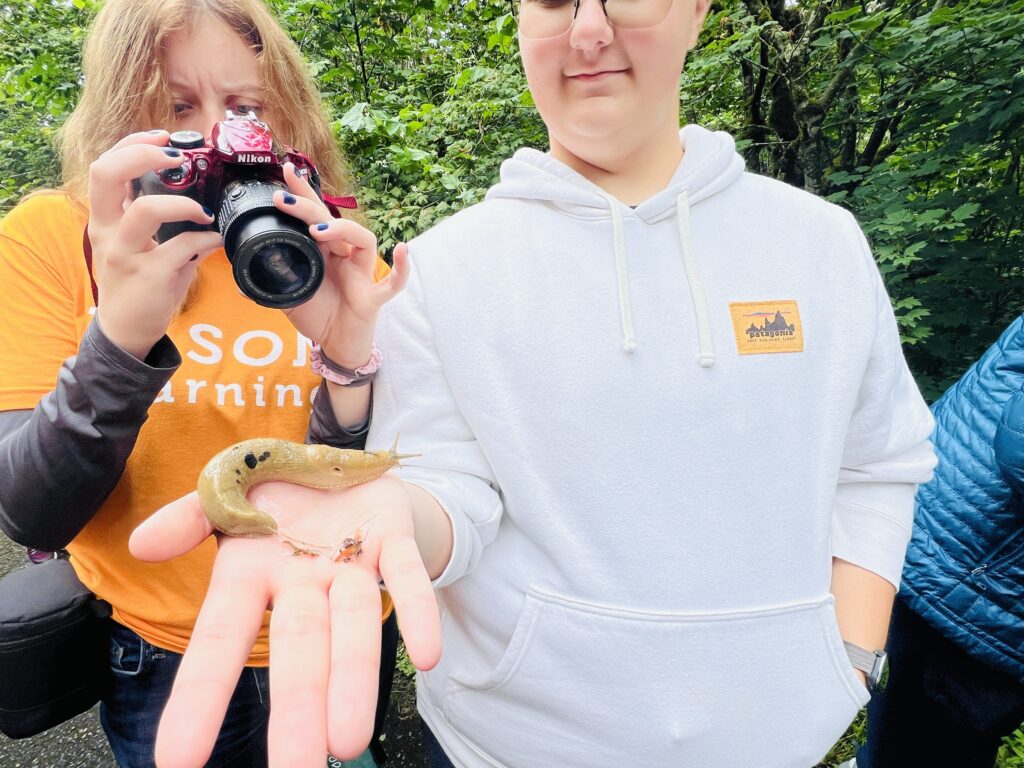
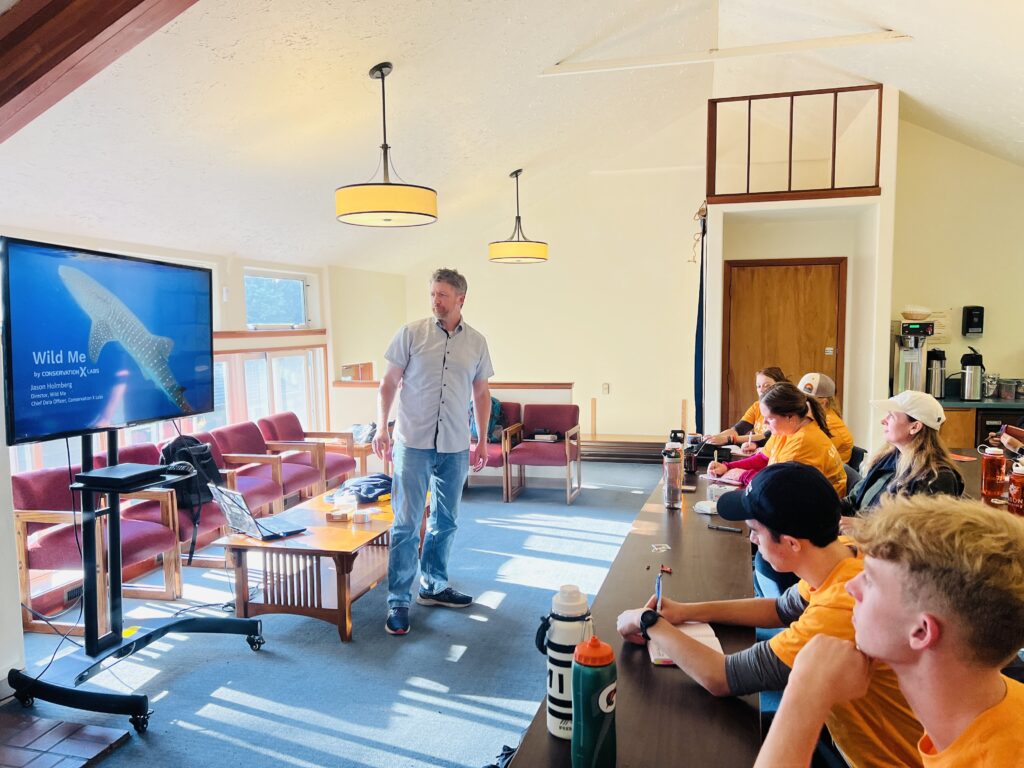

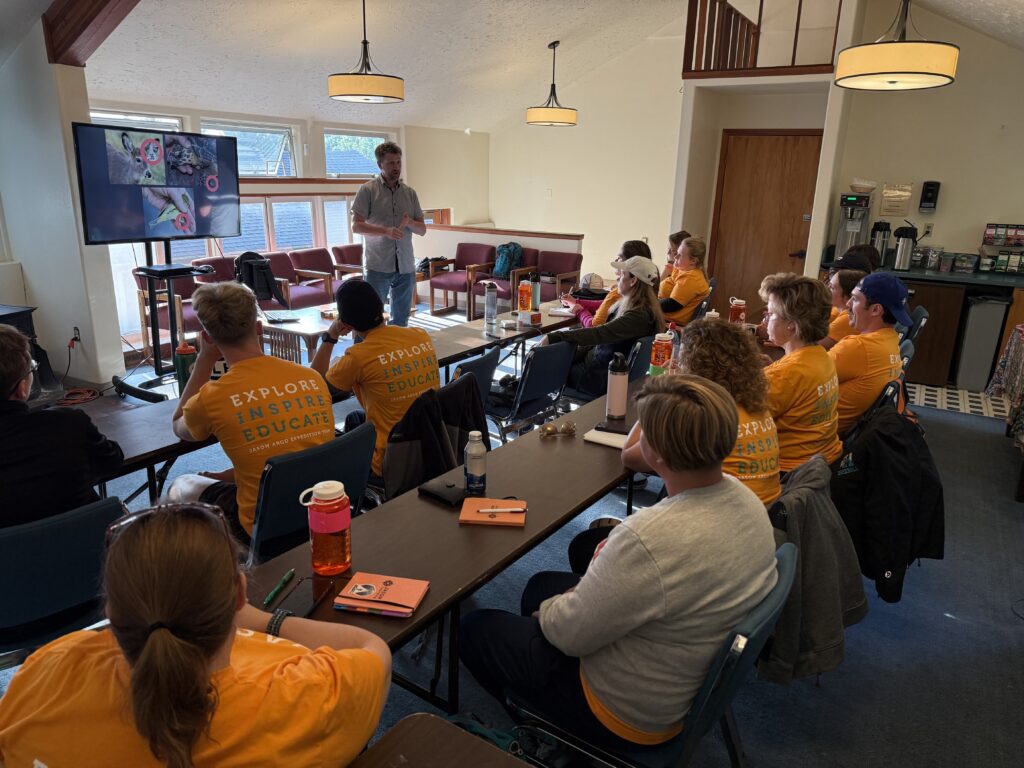
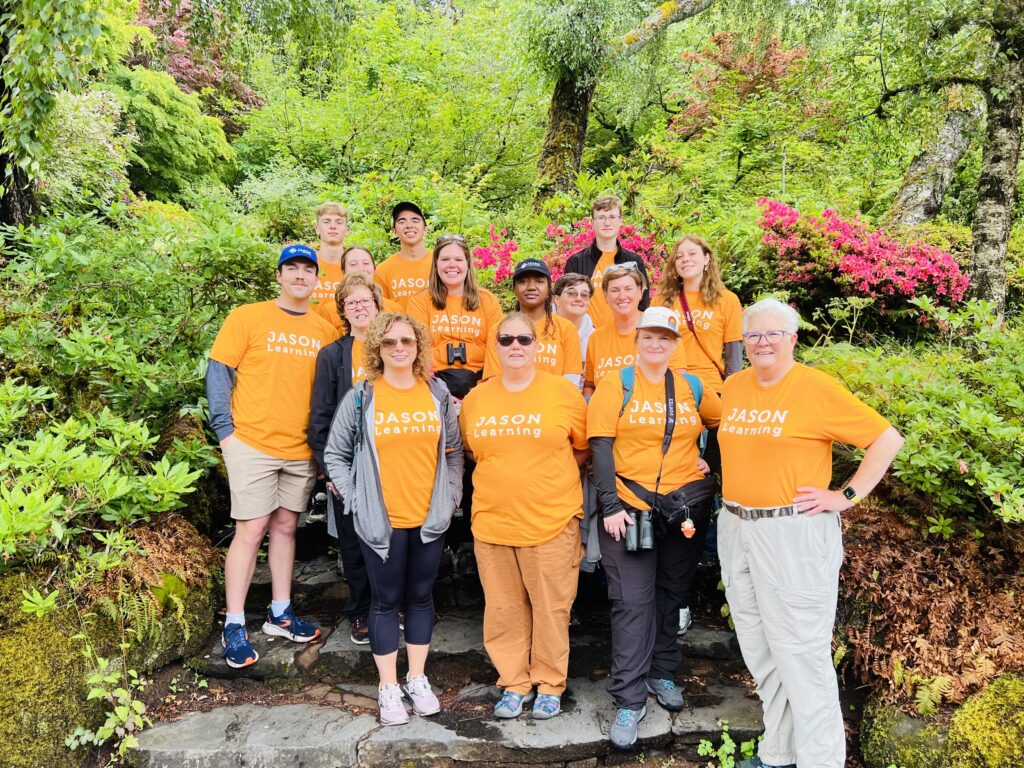
Day Four: Into the Forest and Back to Basics
The Argonauts have had full and exciting days, starting each morning with early hikes to observe birds, immerse themselves in nature, and explore tools that support different types of conservation ( environmental, nature, wildlife, biodiversity). These tools include iNaturalist, Merlin, eBird, trail cameras, acoustic monitors, and simple things like nets, buckets, pH paper, etc.
Monday’s focus was the intersection of old and new conservation practices. The Argonauts traveled into Mount Hood National Forest with Teri Lysak, the Wolverine Tracking Project Coordinator for the non-profit Cascadia Wild. Teri taught the Argonauts how to set up a trail camera and collect data from it. She also led a brief orienteering class, challenging the group to use a compass and paper map to locate the camera trap, reinforcing the value of traditional navigation skills when modern technology like GPS or batteries fails.
The camera site was located off-trail, offering many of the Argonauts their first experience navigating off the beaten path. They had the opportunity to review images captured by the trail camera and learn more about Cascadia Wild’s conservation goals.
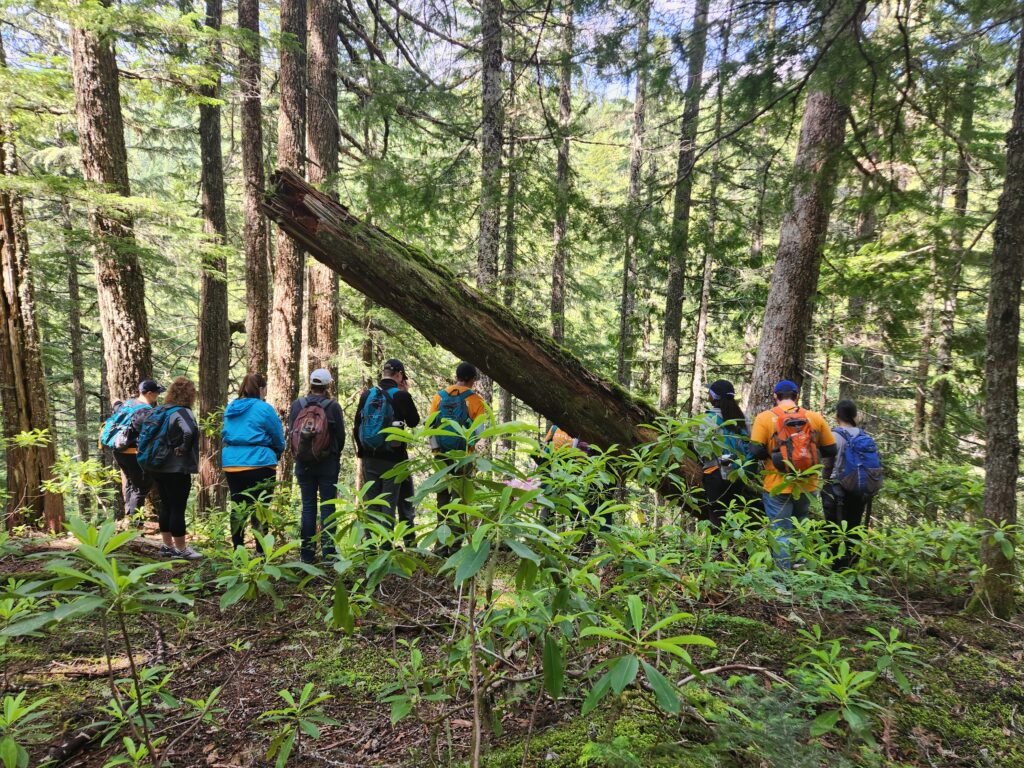
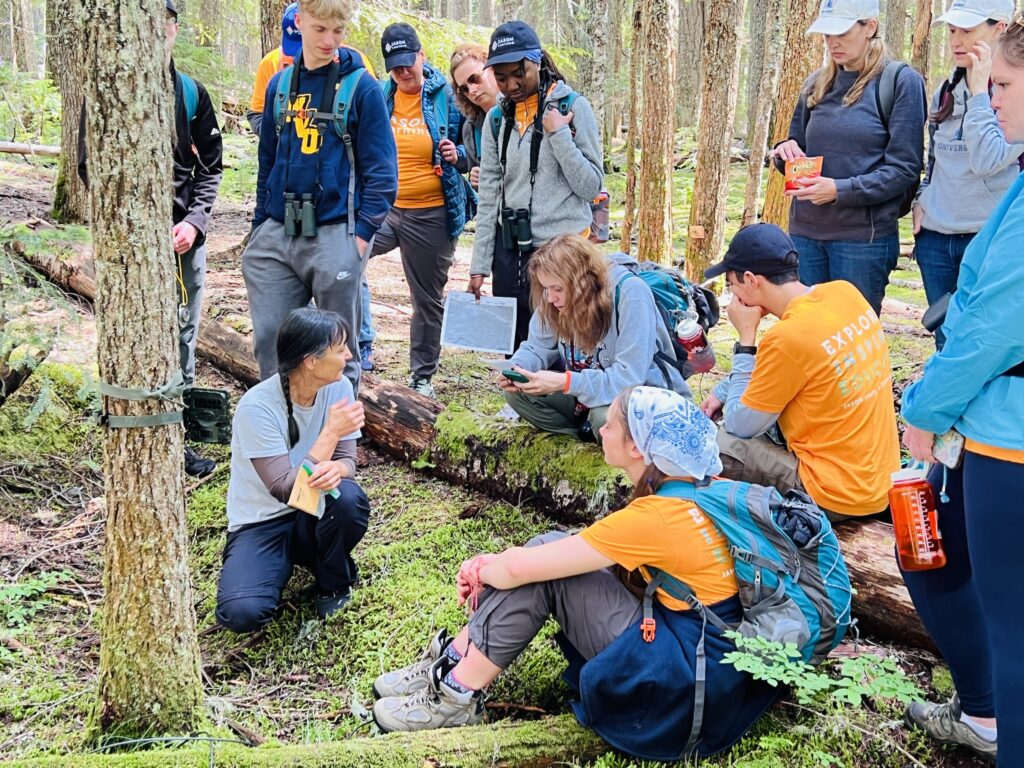
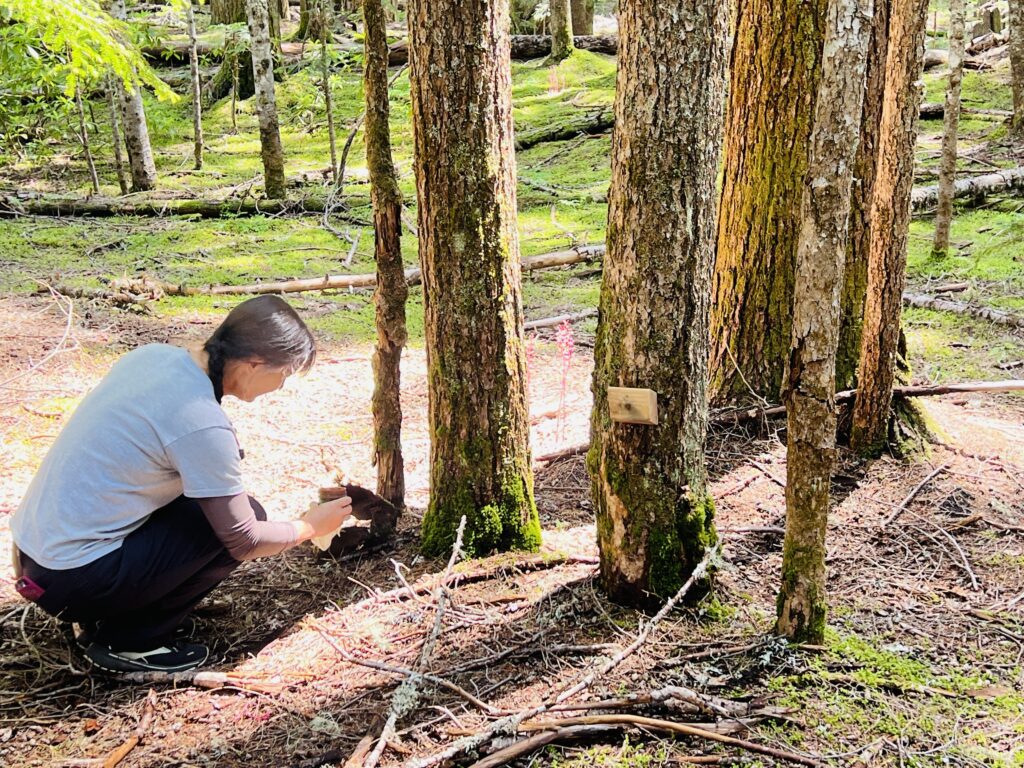
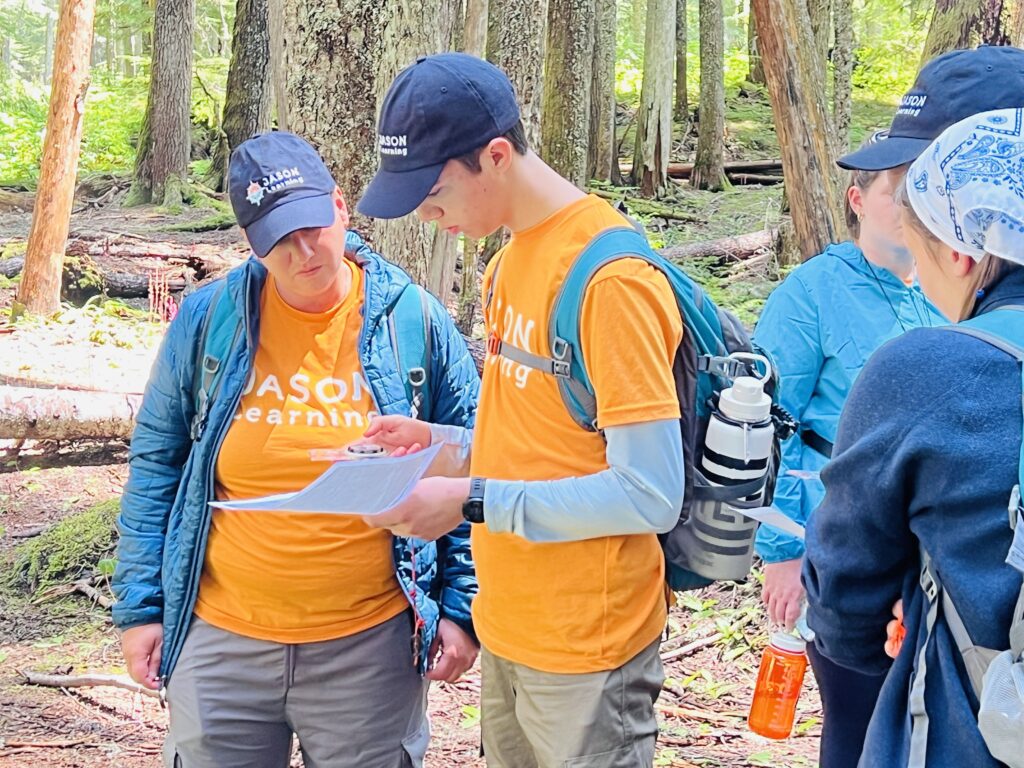
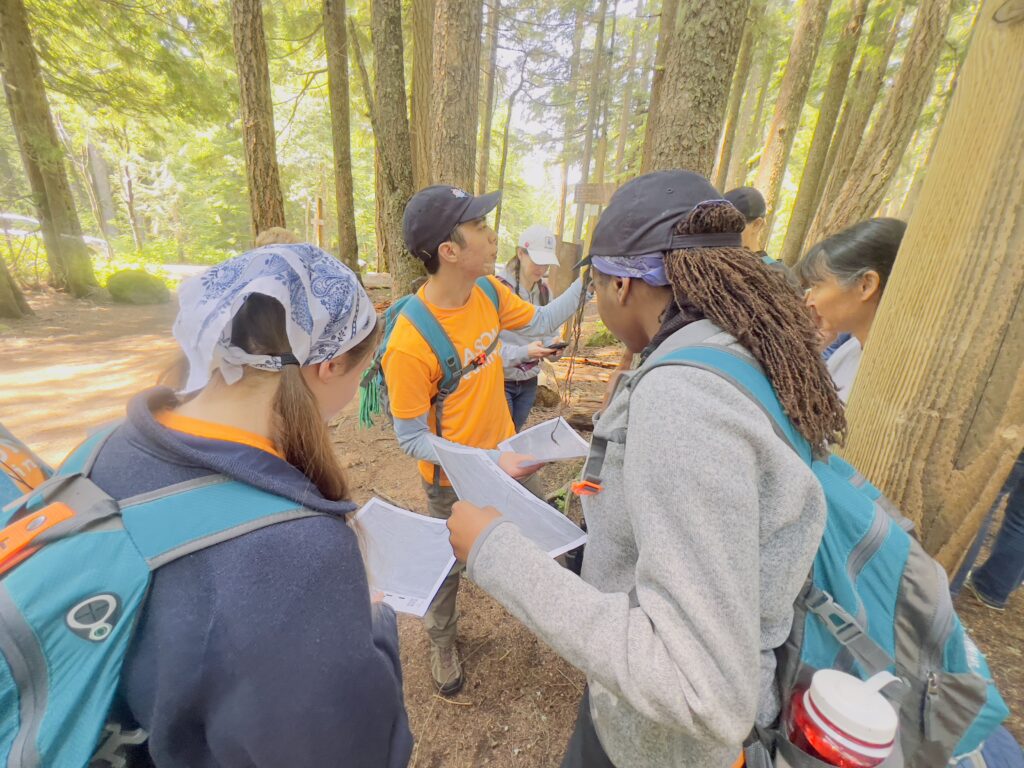


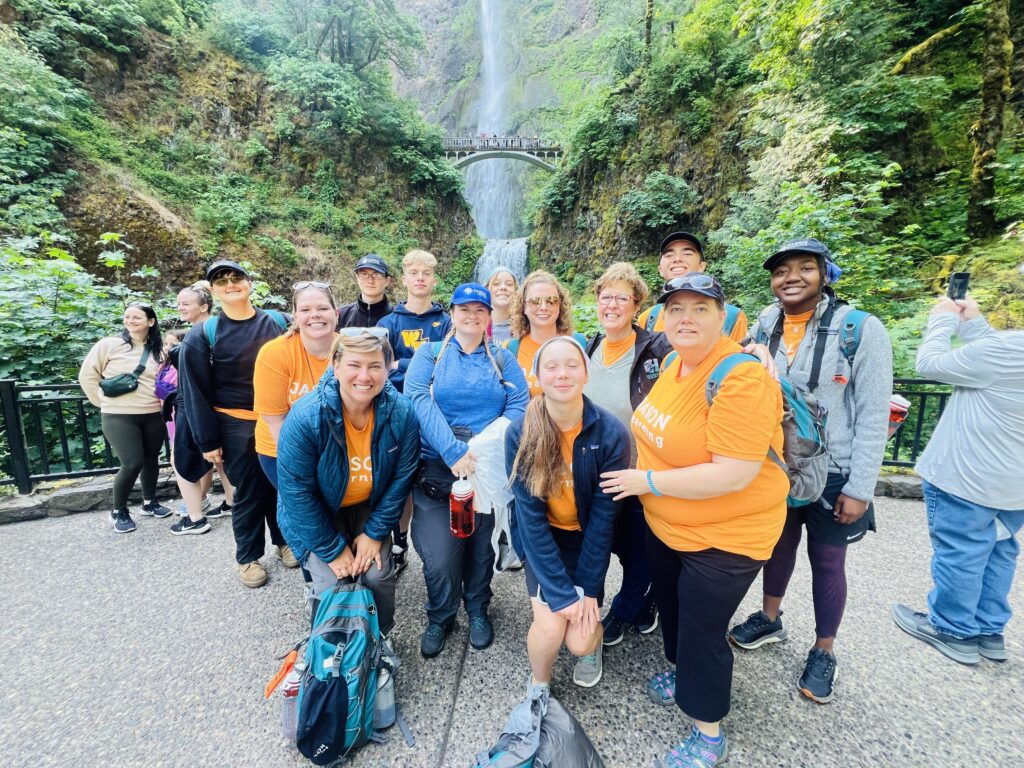
In the afternoon, the group made a brief trip to the snow line on Mount Hood before returning to their home base. That evening, the Argonauts met Wren Shiaffler, a local entrepreneur with a vision to launch a food waste composting venture. Inspired by her mission, the Argonauts were given a Design Thinking Challenge Sprint to brainstorm and prototype solutions to help her achieve her goals.
The day also included an ambitious attempt to collect and analyze freshwater samples, though time constraints limited the activity. Still, the Argonauts made a valiant effort.
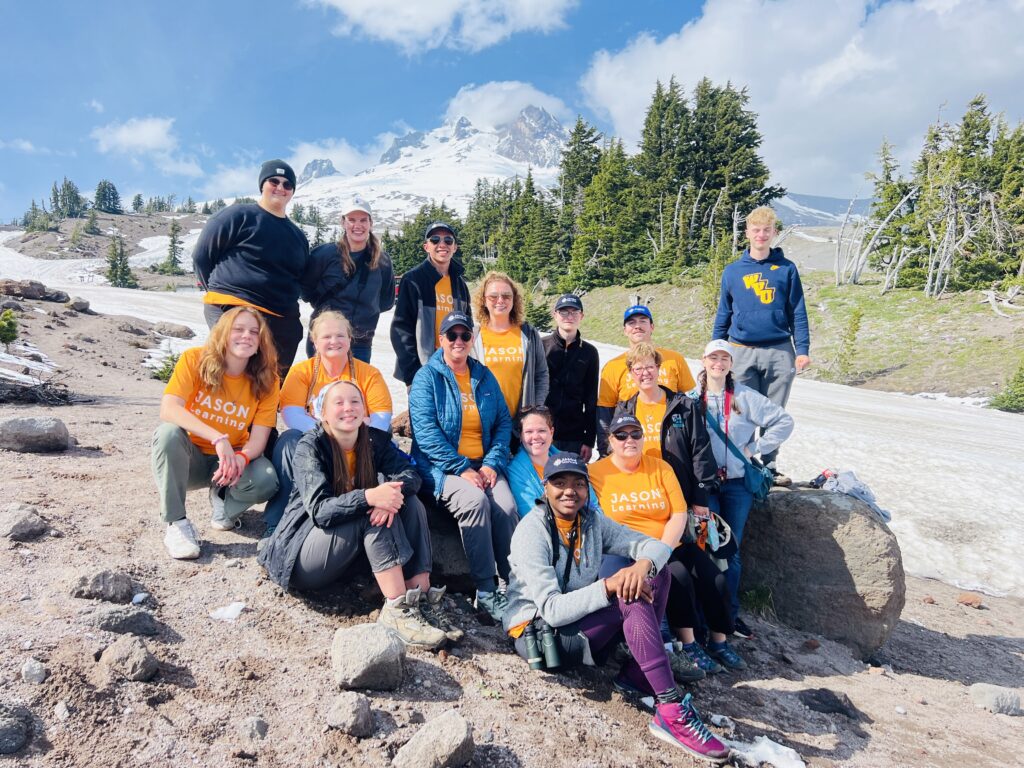
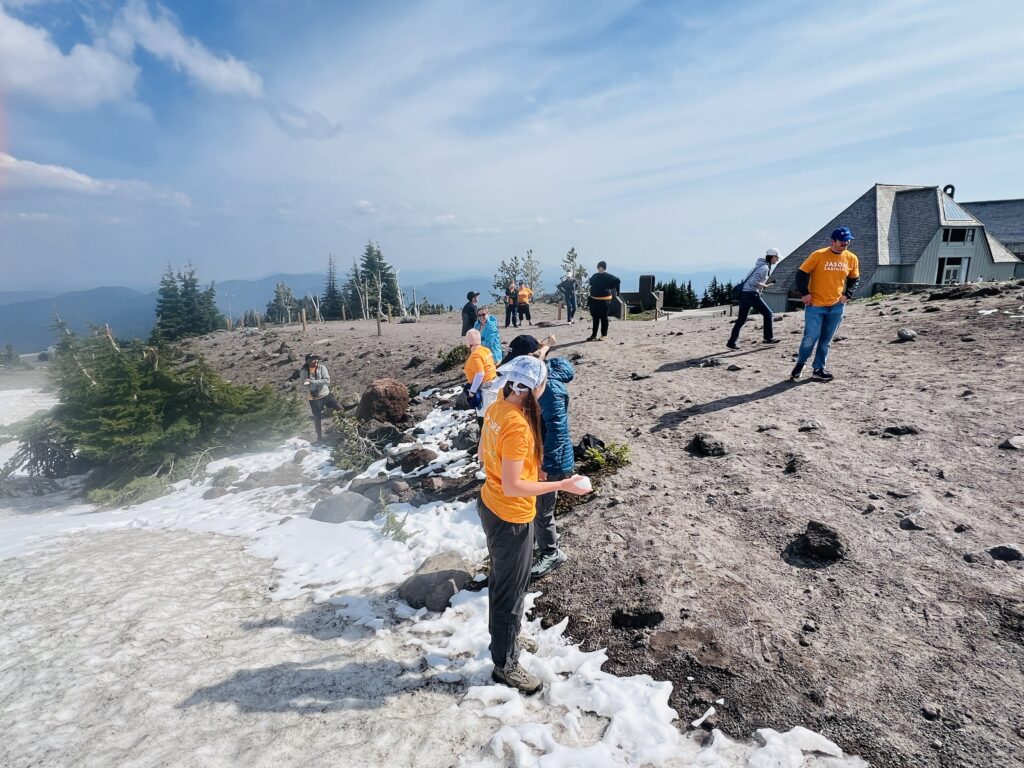
Final Day: Sharing Science with the Public
One of the most exciting traditions of every recent Argonaut Expedition is the culminating event, when our amazing teams of Argonauts share their experiences, research, discoveries, and practice their science communication skills in a public setting. This year, we were thrilled to have a truly special audience: 15 Park Rangers at the Bonneville Dam in Oregon.
Our Argonauts showcased an impressive range of knowledge, diving into how real scientific research is conducted in the field. They explored the use and importance of tools like nets, boats, camera traps, acoustic monitors, and AI-powered platforms like iNaturalist and eBird—all of which play a vital role in helping us understand our rapidly changing planet.
The presentations were not only informative but deeply inspiring. The Student Argonauts expressed their passion for contributing to a more sustainable future and learned about potential paths in science careers and academic fields. The Teacher Argonauts gained fresh ideas for integrating authentic field science techniques into their classrooms.
Here are the incredible topics our Argonauts presented:
- Ferns in the Pacific Northwest vs. the Mid-Atlantic Region
- Carla Shaw (London City, OH) & Marissa Bossard (Fairfax, VA)
- Slugs
- Miles Munique (Mercer) & Onyx Crawford (Nadaburg, AZ)
- Declining Bird Populations
- Ericka Martin (Nadaburg, AZ), Addy Schmitz (Fairfax, VA), Blake Mitchell (Doddridge, WV) & Ryan Bower (London City, OH)
- Water Quality & Macroinvertebrates
- Jenni McClannahan (Mercer, WV) & Judi Cozart (Portsmouth, VA)
- Amphipods and Jellyfish: A Special Relationship
- Finn Claudill (Mercer), Myla Stith (Portsmouth, VA), & Miranda Mitchell (Doddridge, WV)
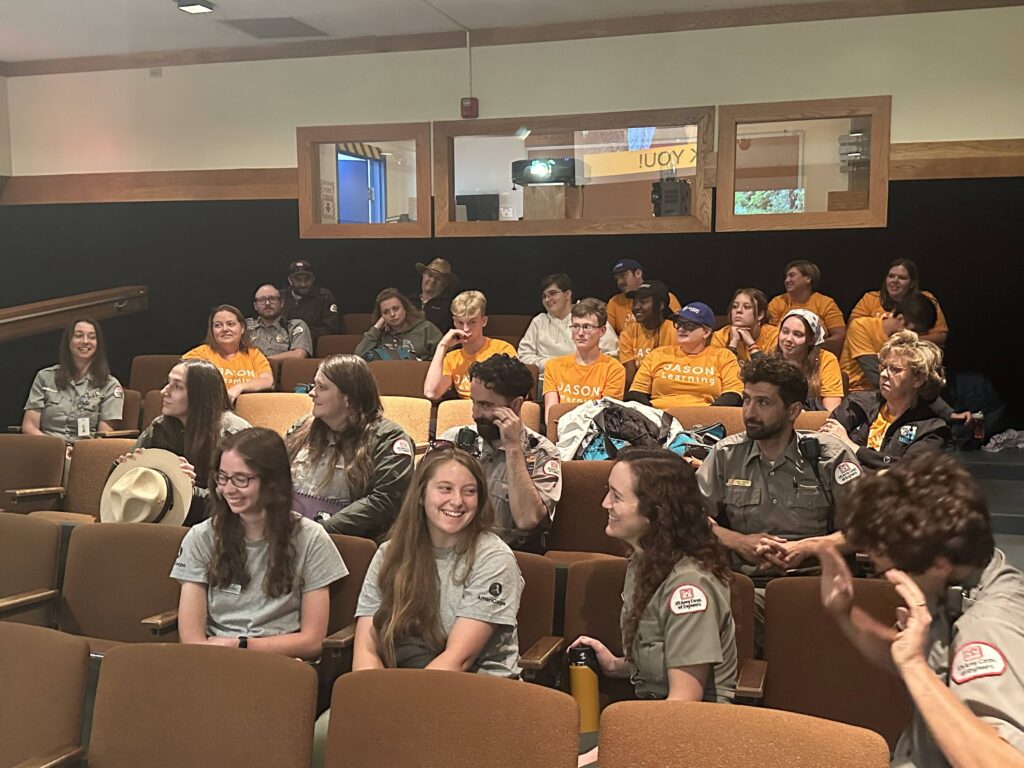
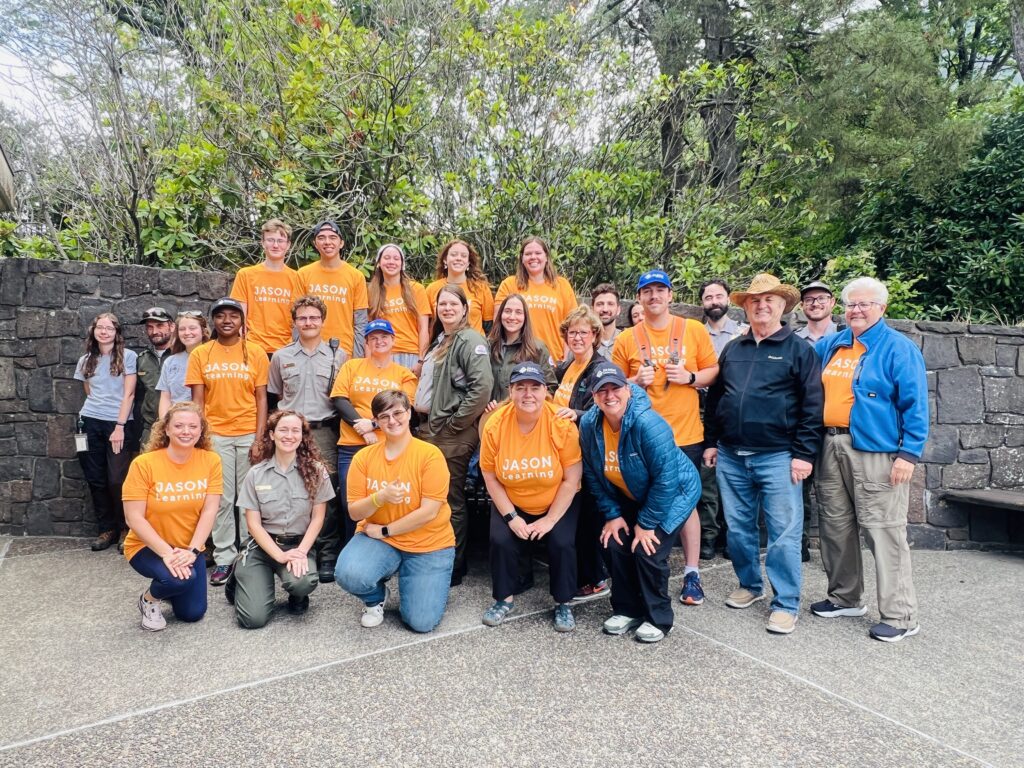
Looking Ahead
The 2025 Argonaut Expedition was a powerful reminder of what happens when curiosity meets opportunity. From stormy coastlines to AI innovations, the Argonauts embraced every challenge and left inspired to design a more sustainable future.
To learn more about the Argonaut Program and future expeditions, visit https://jason.org/argonauts/.
